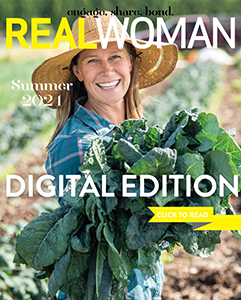The 2011 holiday season was seemingly normal for Marian Bolum. Sure, the then-48-year-old was battling a lingering flu that left her more tired than normal, but she was still able to run around, going here and there to help her husband with his part in the annual re-enactment of George Washington’s crossing of the Delaware River on December 31.
But on January 6, she realized everything was not OK—she woke up 25 to 35 pounds heavier, her legs swollen with water. Bolum called her husband at work and told him to come home and take her to Capital Health. “They didn’t know what was going on with me, except that my heart rate was really high,” she says. “They admitted me in the cardiac care unit (CCU), then the intensive care unit (ICU), where my doctor Bipinpreet Nagra, M.D. discovered I had viral cardiomyopathy. The virus attacked my heart and put me into congestive heart failure.”
Cardiomyopathy is a condition that causes inflammation of the heart muscle, which weakens the heart and forces it to work harder. The specific cause is often unknown, but high blood pressure, prior heart attacks and genetics are increased risk factors. Certain viruses, including influenza, can also attack the heart and trigger the condition—as was the case with Bolum.
Bolum spent a week in the hospital, her husband and daughter not knowing if she was going to survive. Her heart was working at about 10 percent, and when she was finally released, she was sent home with a defibrillator. Two years later, Bolum’s heart remains in congestive heart failure but now her heart is working at 42 percent. “I’m very fortunate,” she says. “But I can’t do certain things. I can’t run marathons. My cardiologist says walking is the best thing. Walking and diet.”
Because of her congestive heart failure, Bolum is on a strict low-sodium diet. She keeps her sodium intake down by knowing exactly what goes into her body. “The key is I know where it came from: I know the farmer. I know the farm stand. Or my garden,” she explains. “I can control if it’s organic or non-organic, if it’s GMO or non-GMO.”
She also controls how it is stored.
Food preservation has become integral to Bolum’s lifestyle. After she returned from the hospital, her heart still weakened and her prognosis uncertain, Bolum’s husband asked her what she wanted
to do. Her answer: Put a picket fence around her garden. “That’s what saved me, my gardening,” she says. “My husband called it ‘Marian’s Victory Garden.’ I got off the defibrillator. I felt so lucky to be alive that I decided I wanted to do more. I decided I wanted to teach some classes on how to preserve.”
Bolum completed the Master Food Preserver program at Cornell University last year, and in January 2014, she started Farm to Jars, which promotes food preservation through classes and workshops. She teaches at local community colleges, stores, churches, farmer’s markets, and in private homes. “My goal is to become a non-profit and be able to teach people how to preserve food,” she says. “Once you know the basics, you can make anything—from jellies to condiments.”
Preserving, Bolum explains, is more than just canning. It also involves freezing and dehydrating and can work on any budget. “My garden, all of the food from it, I consume for the season or I dehydrate it—that you can do in your oven. I still have dehydrated tomatoes from last year,” she says. “When I go strawberry-picking, I use some to make my jam, I dehydrate some and I also freeze some. So in January if I want to make jam, I have fresh-picked strawberries that taste like strawberries.”
By preserving the food she grows or buys farm fresh, Bolum rarely goes to the grocery store, where many of the shelf-preserved foods are laden with salt. “If you look at a jar of spaghetti sauce from the grocery store, a quarter cup of sauce has 350 mg of salt on average,” she explains. “My stuff that I preserve has no sodium in it, so I can take control of what I’m eating. That is my main theme—to get out there and teach people to take control of what they’re eating.”
When people ask her how she is doing so well after such a life-altering ordeal, Bolum credits all of the different pieces of her life that helped her get to this point: her family, her community, her church, and the doctors and staff at Capital Health. She also tries to keep a positive attitude, getting busy when she starts to get down—and she doesn’t appear to be slowing down any time soon. She’s even added beehives to her garden while growing Farm to Jars.
“How long am I going to live? I don’t know. I can’t worry about it,” she says. “For now I feel great. Tomorrow I don’t know. That’s why I look at every day and say, ‘What am I going to do today?’ Today is great.”
Three Methods
The science of food preservation is more than just storing jam in a jar. Here are some of the basic techniques you could do at home.
CANNING |
A food product is cooked for a specific length of time, then vacuum-sealed in a specially designed glass jar. There are two canning methods: water-bath and pressure. The former is for high-acid foods, the latter for low-acid foods. Products required to can include reusable canning jars and rings and one-time-use sealing lids.
FREEZING |
Food is packaged at the peak of freshness and then stored at a temperature of 0 degrees.
DEHYDRATING |
This age-old method involves heating food at a temperature high enough to remove water, but low enough so you don’t actually cook the food. You can do this with a special dehydrator or in a regular oven.







